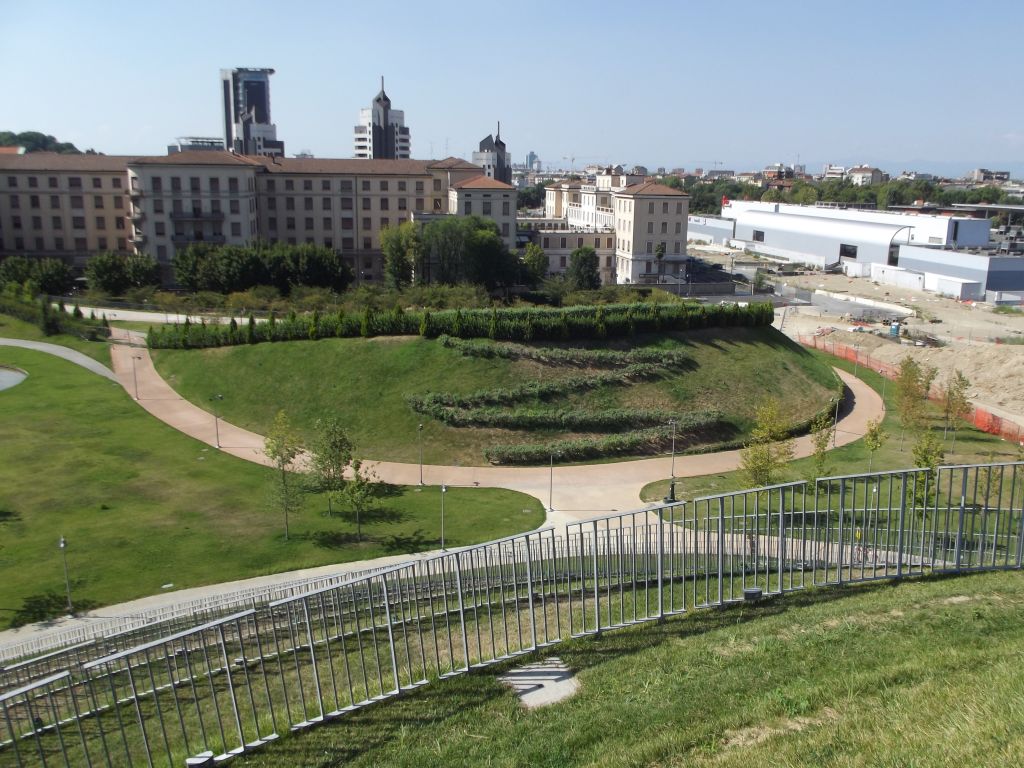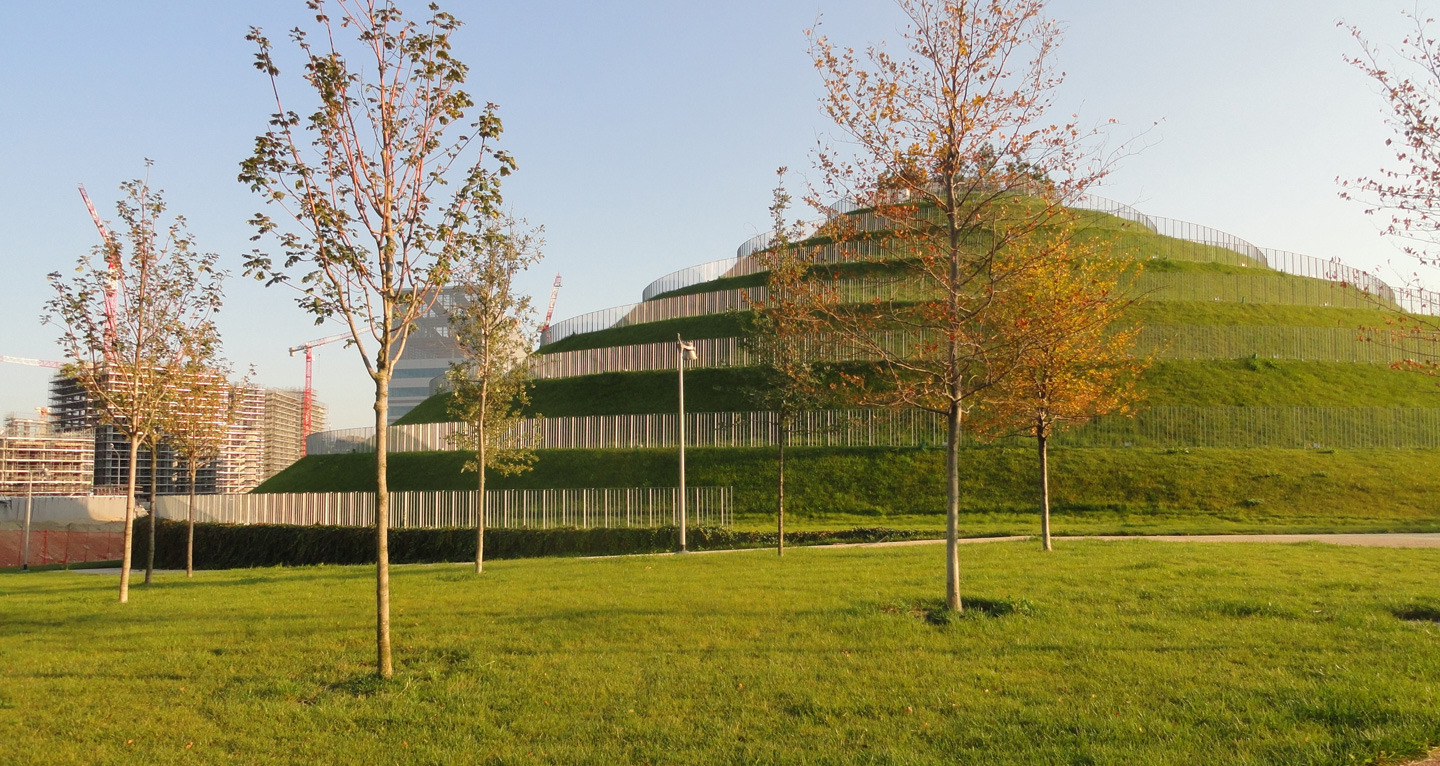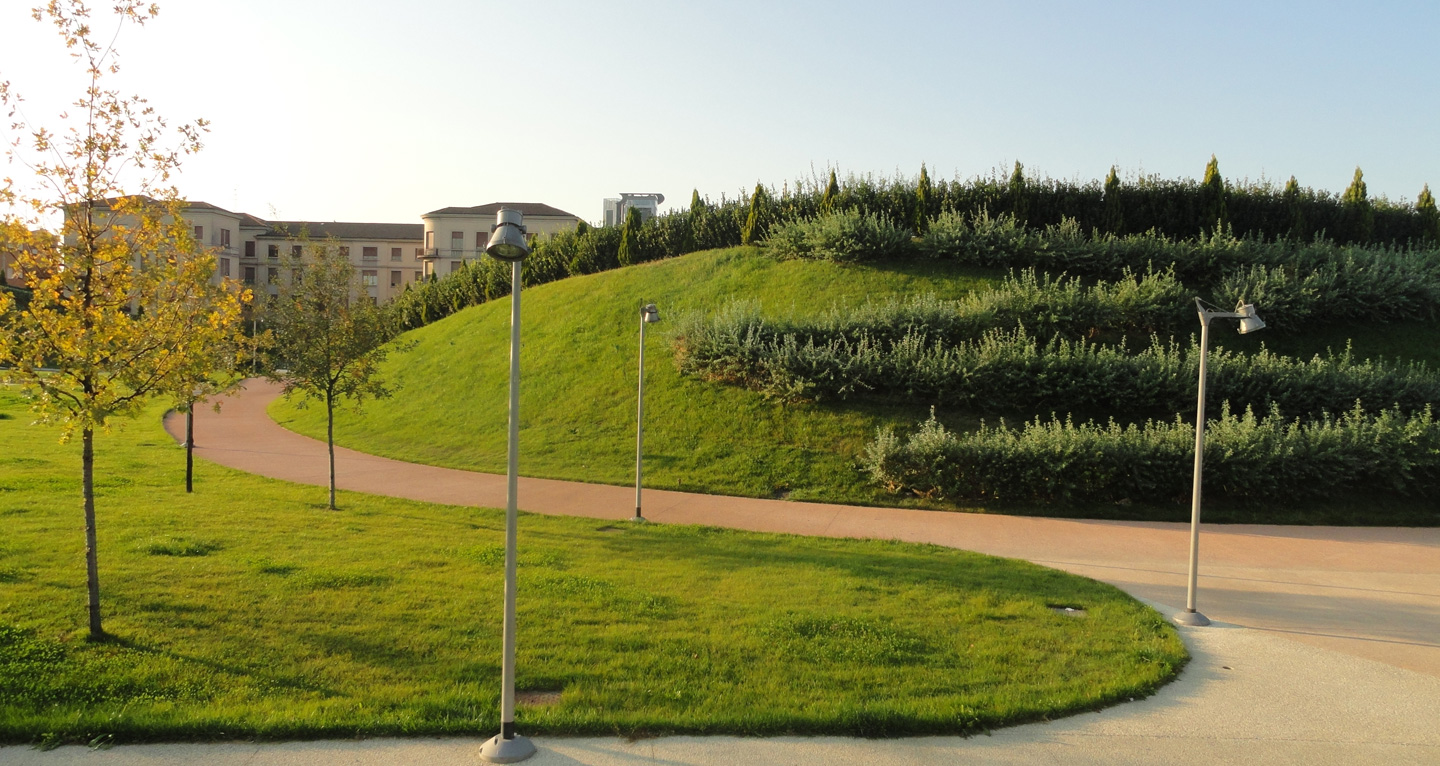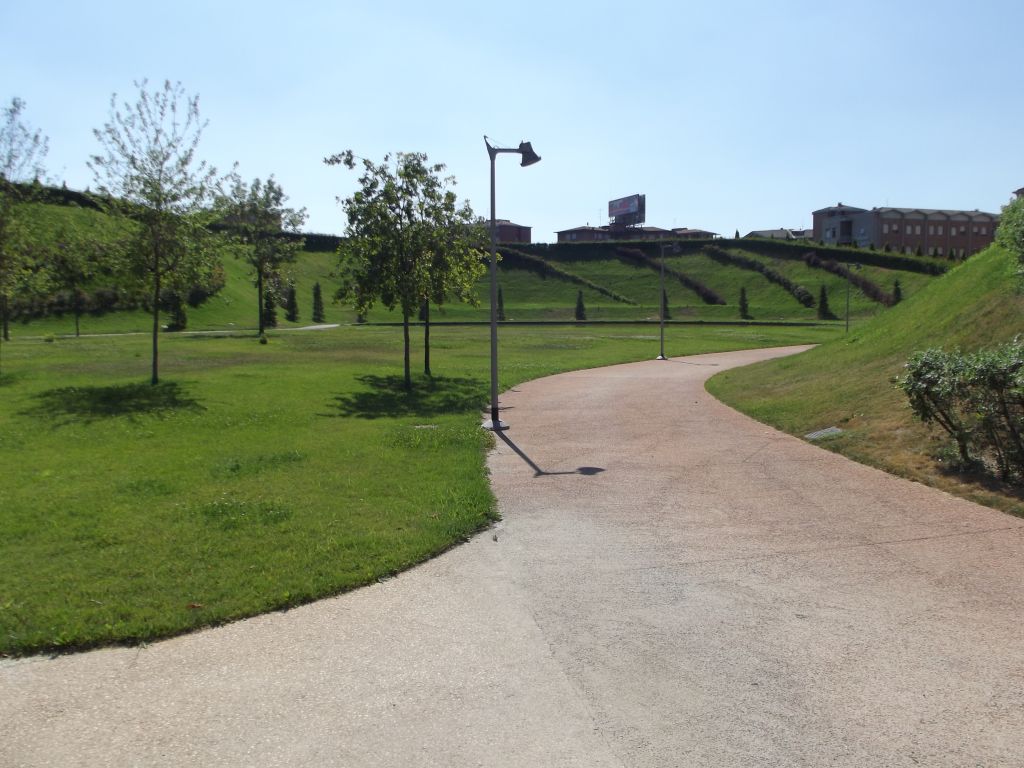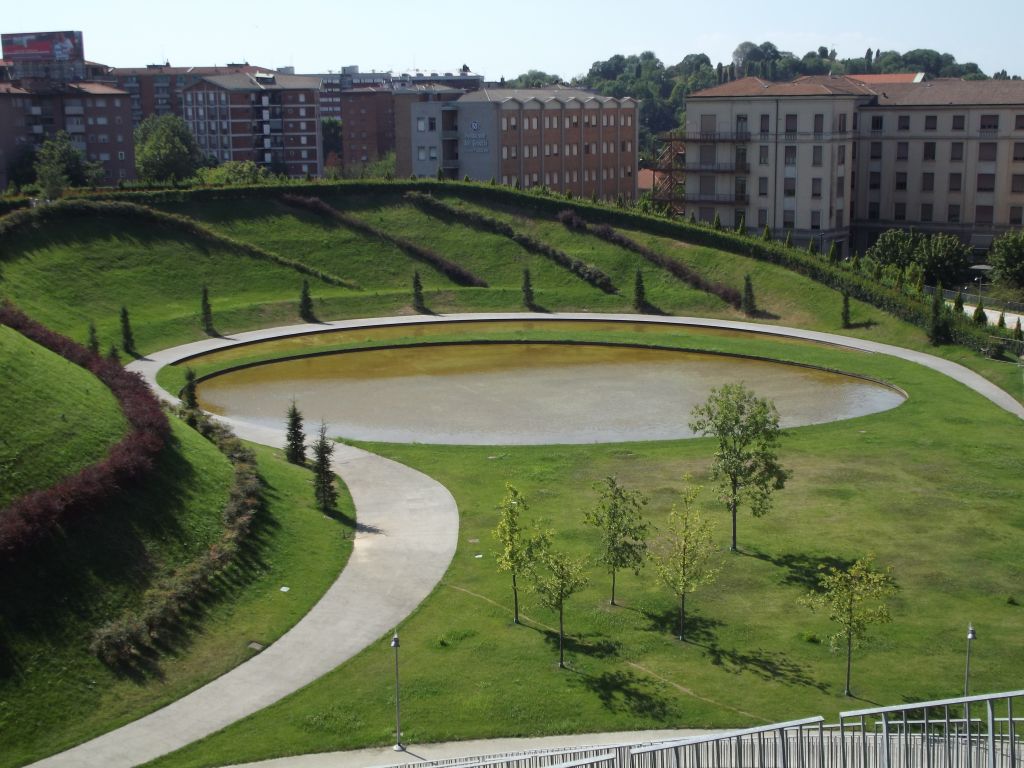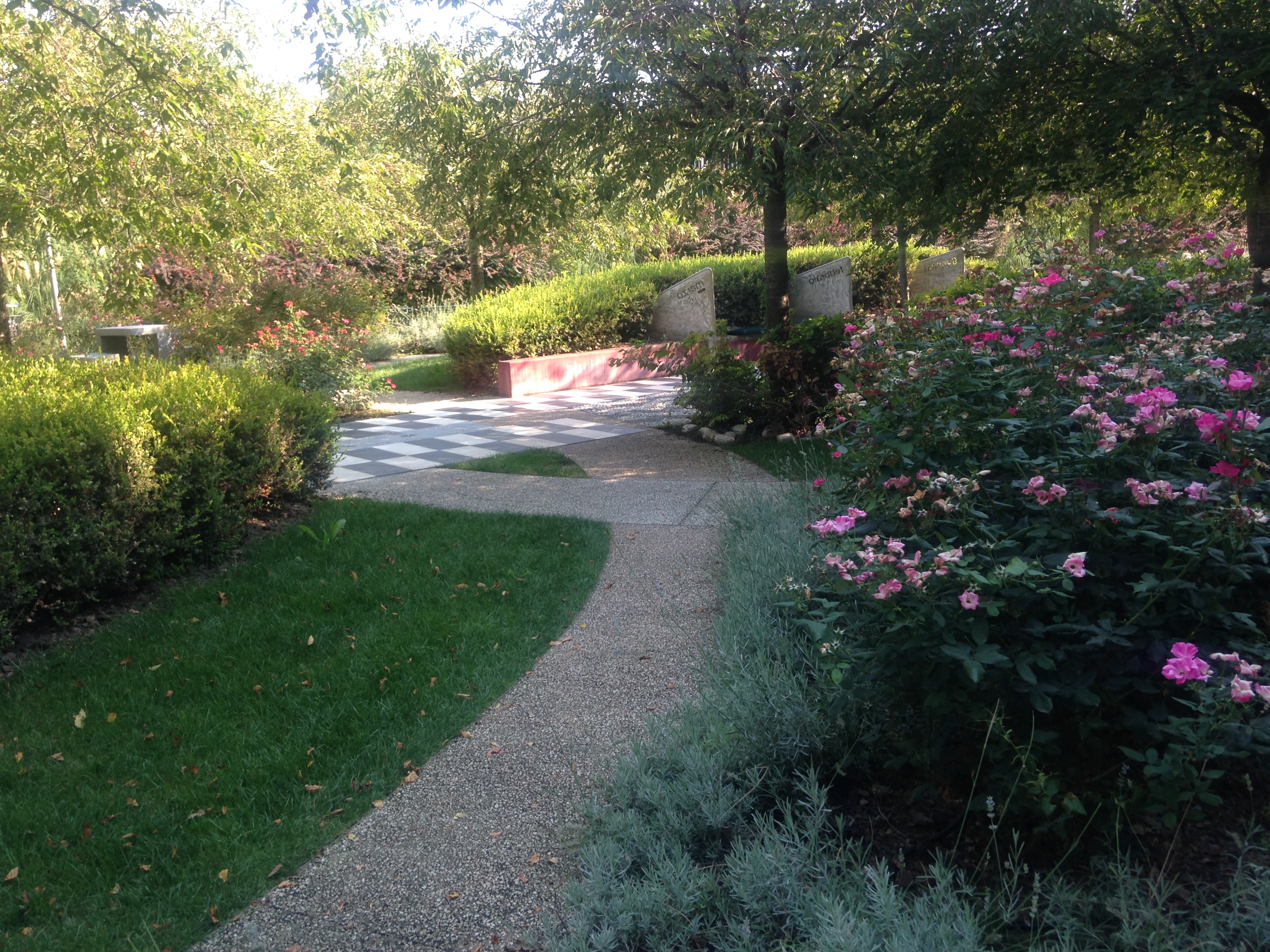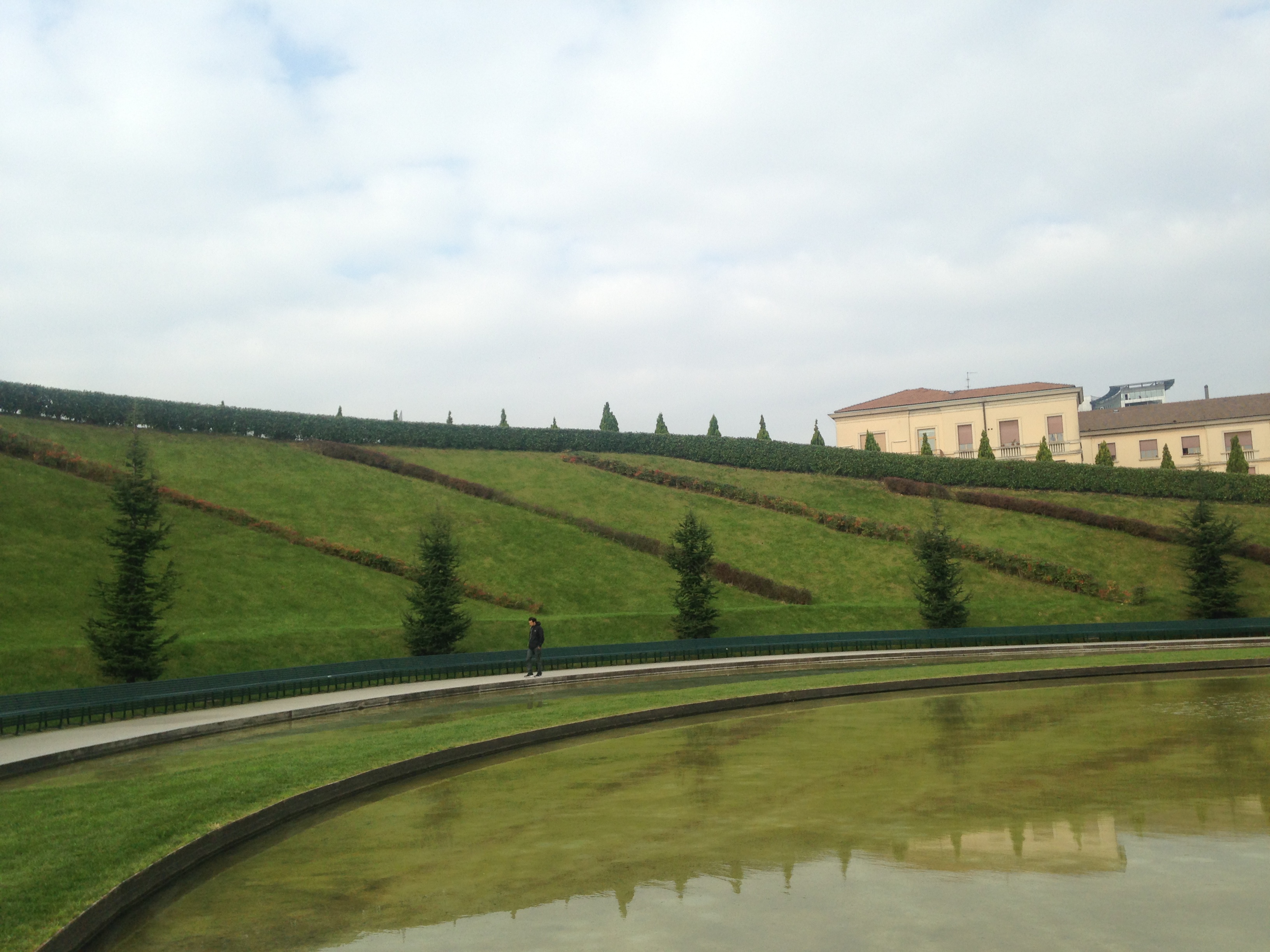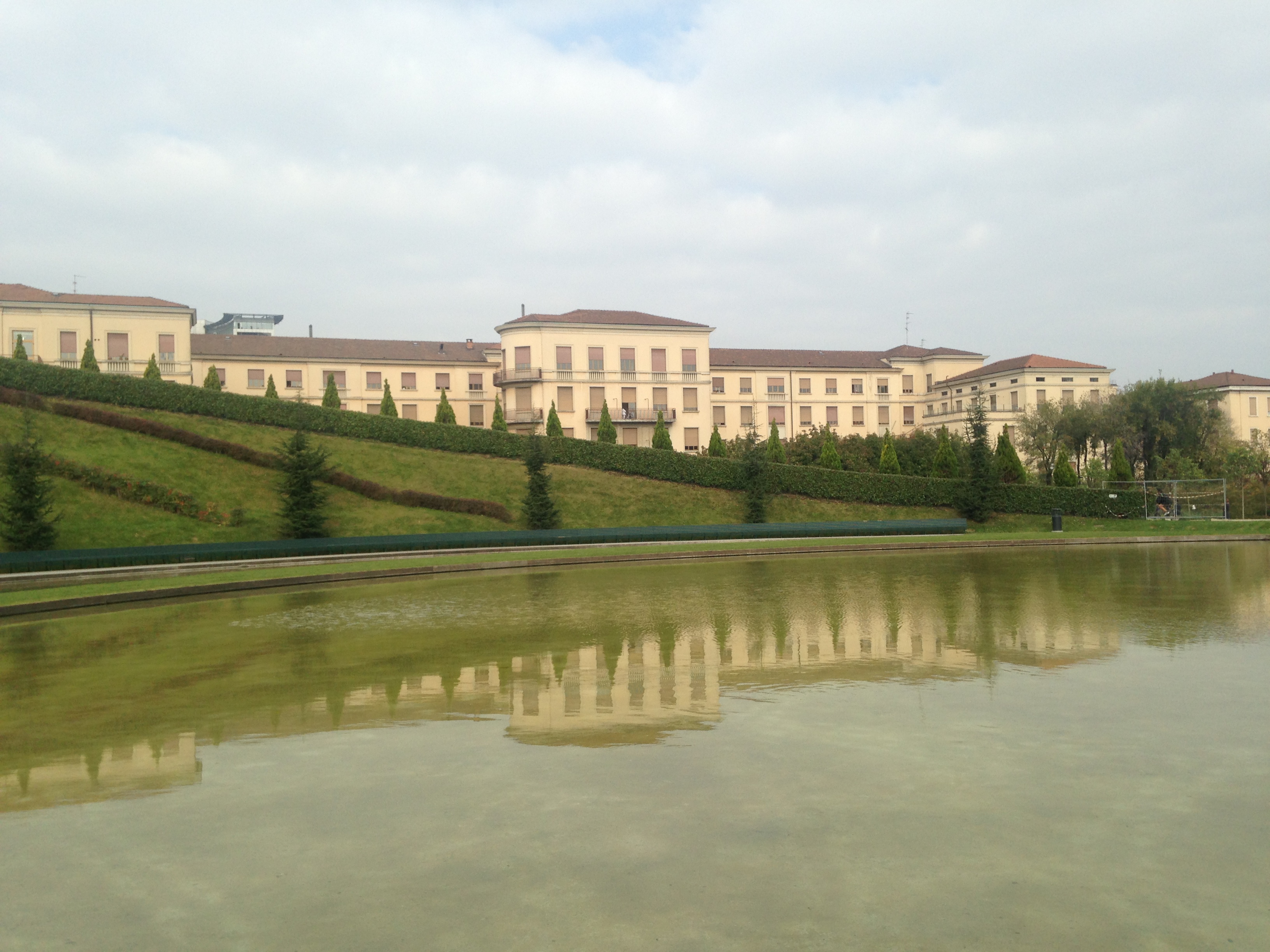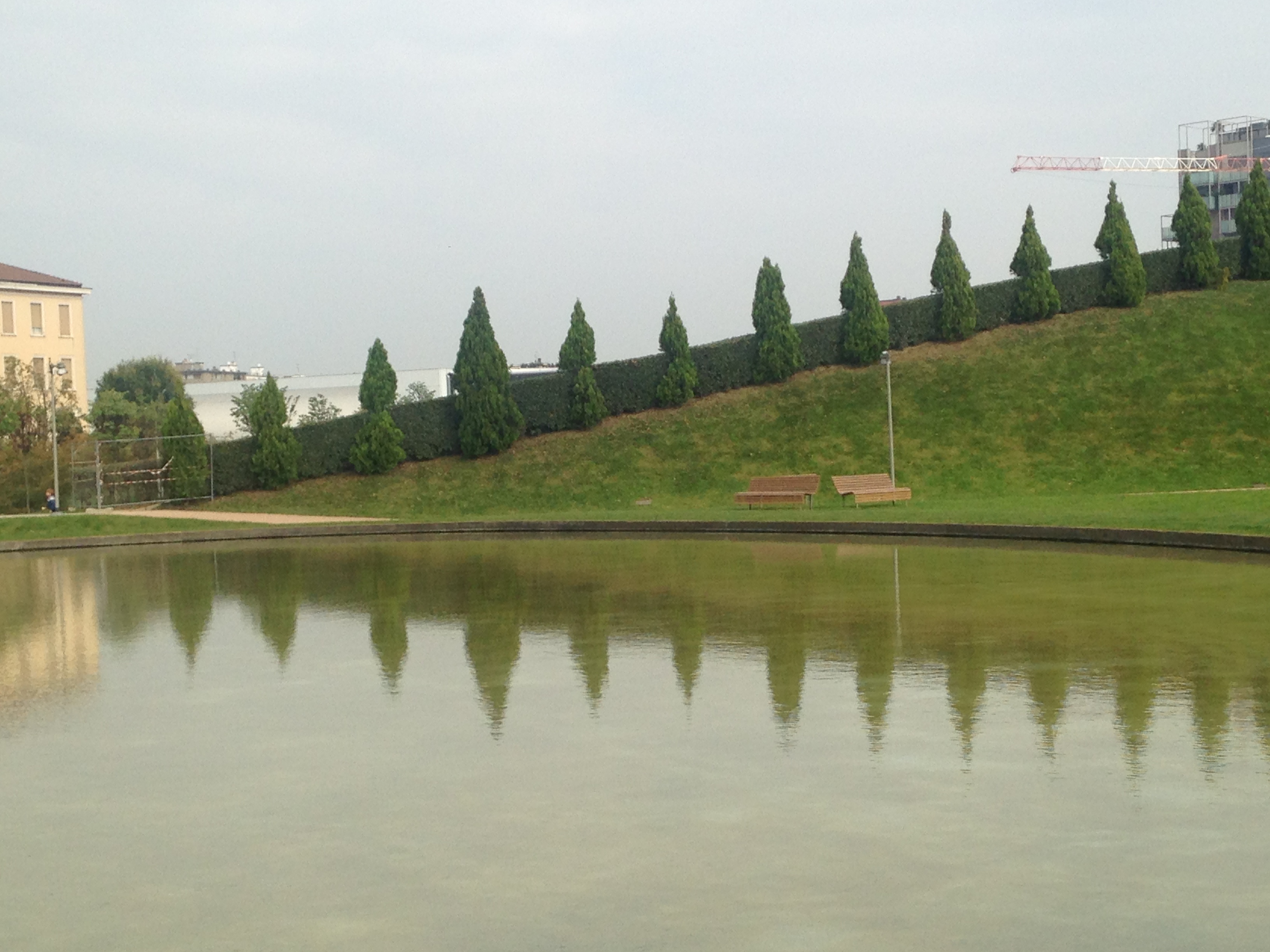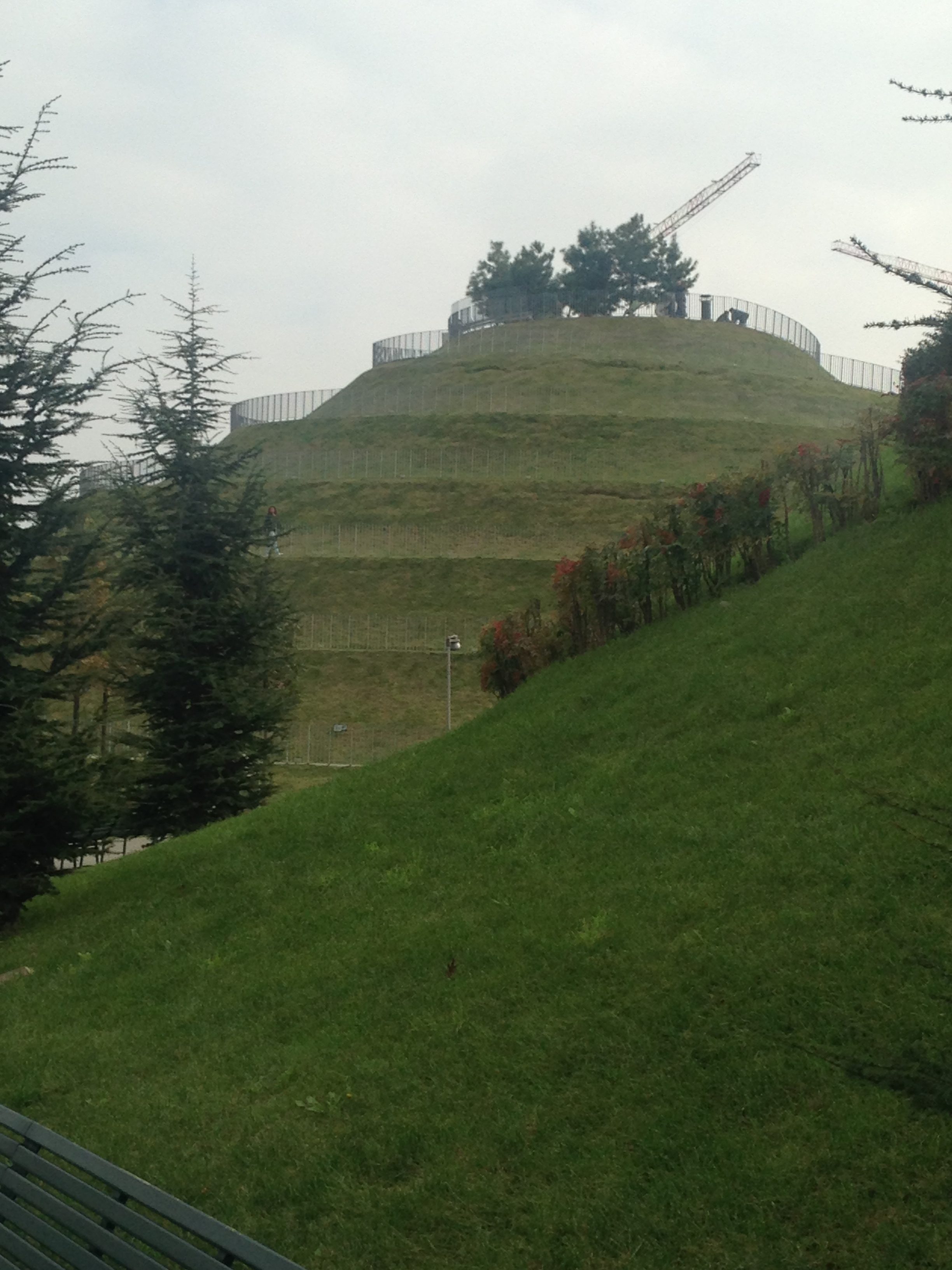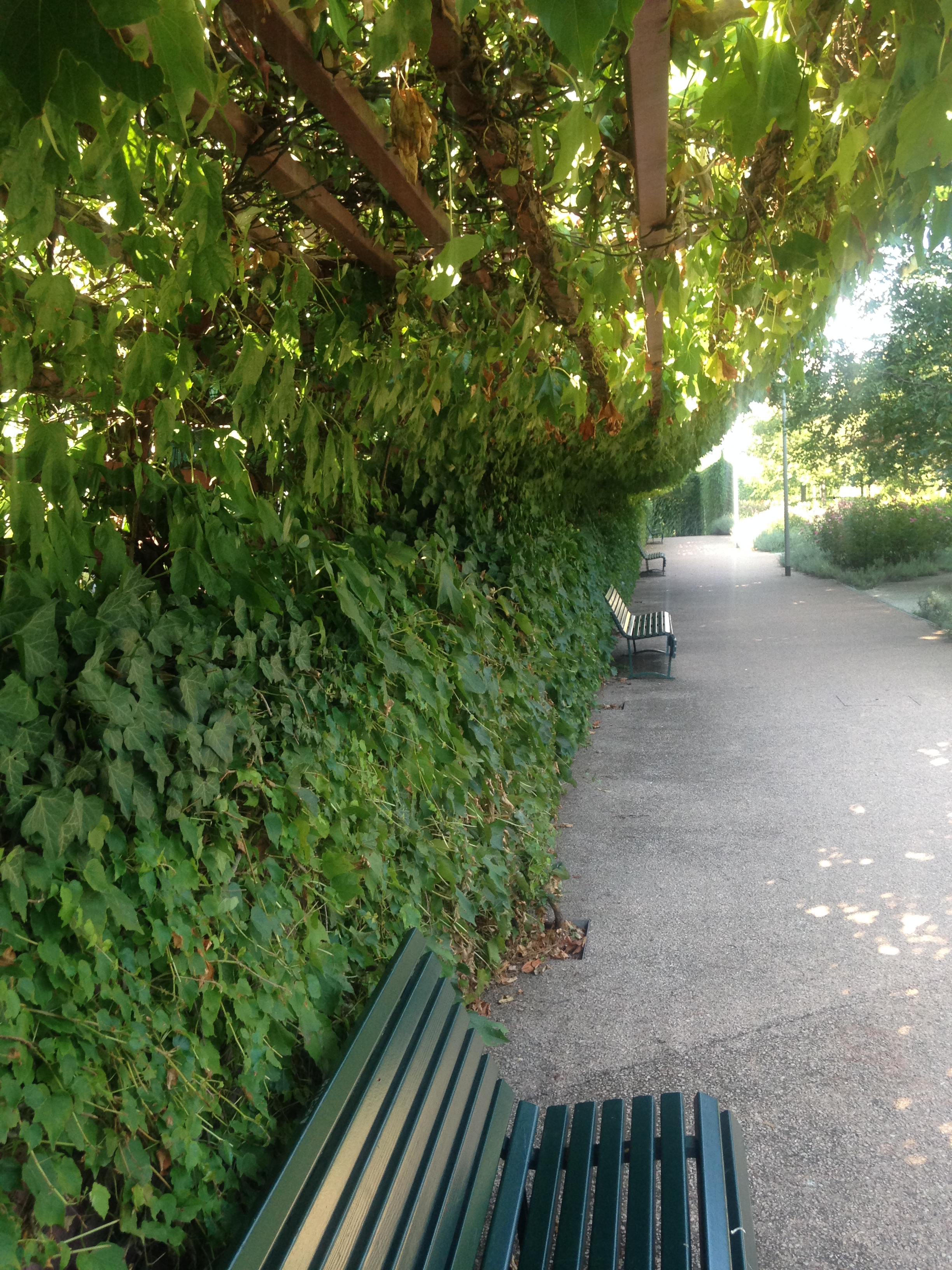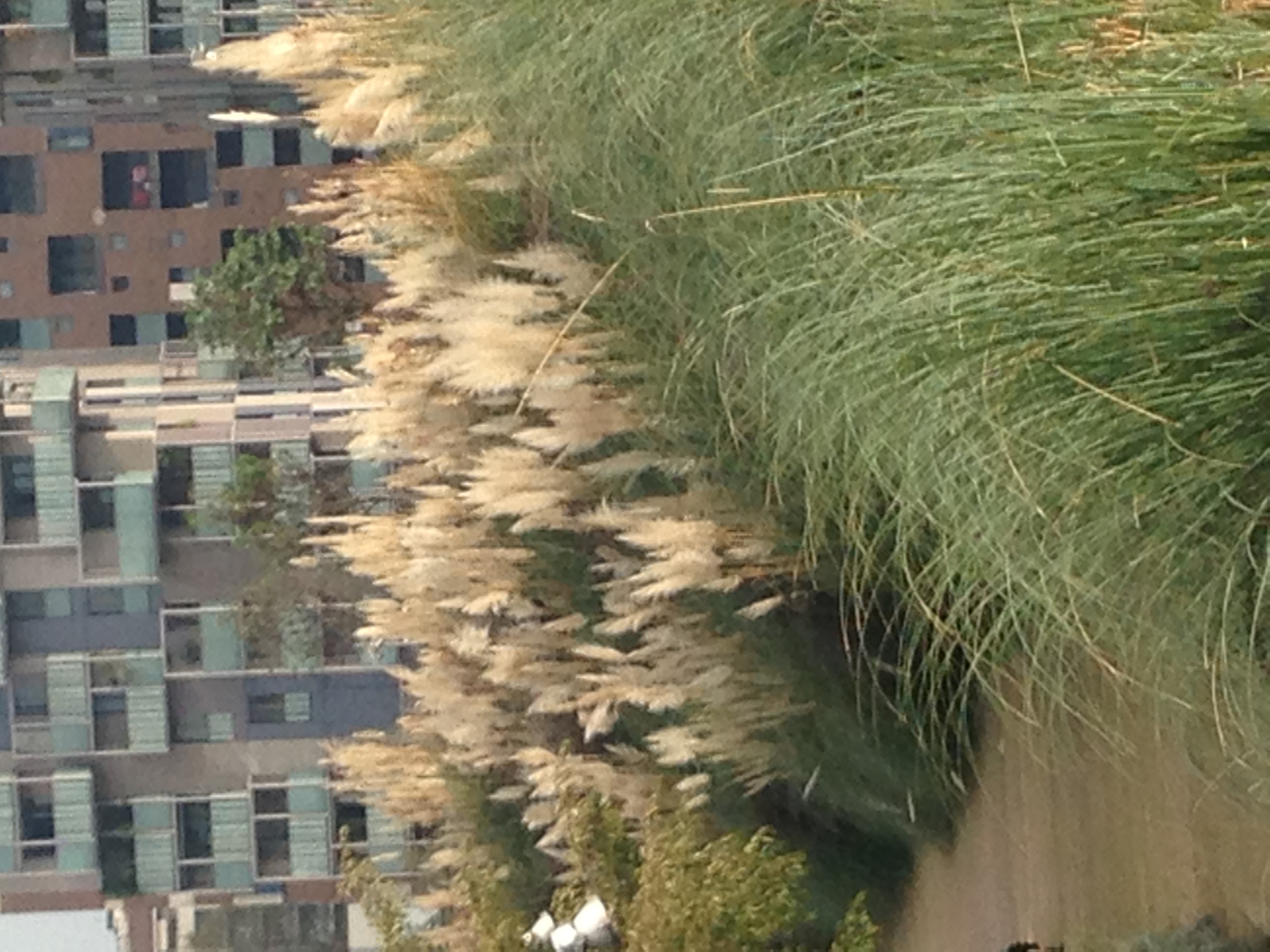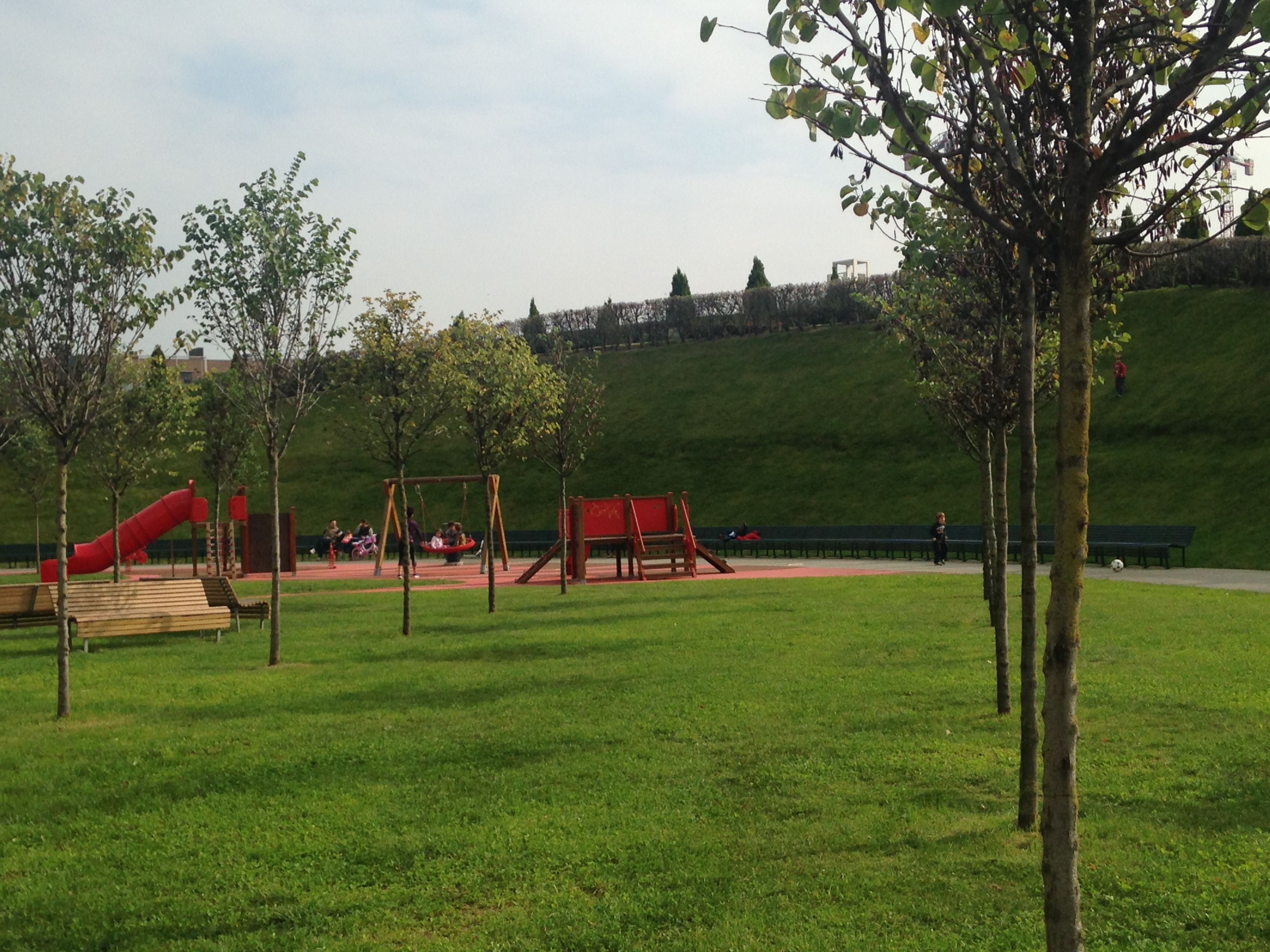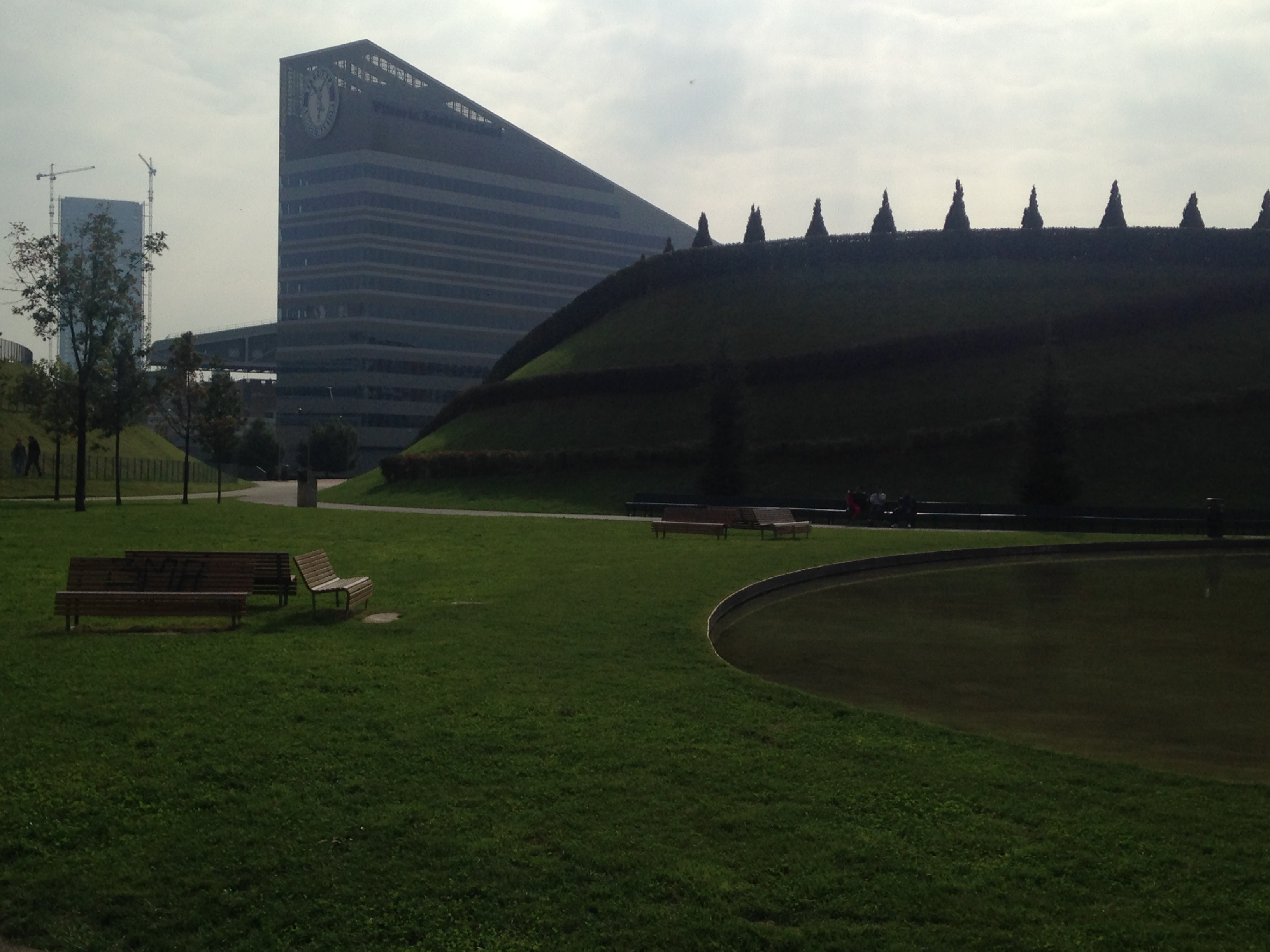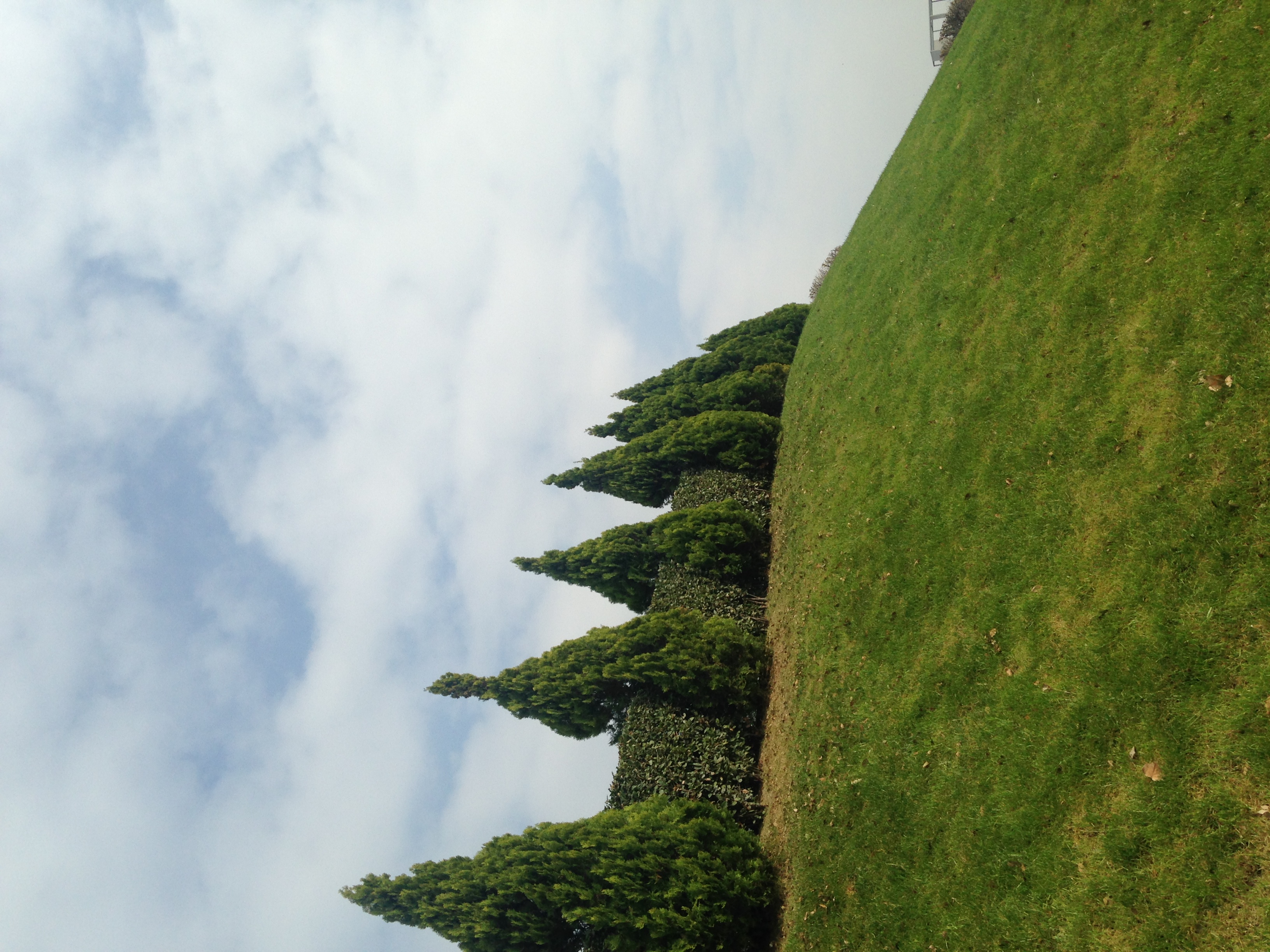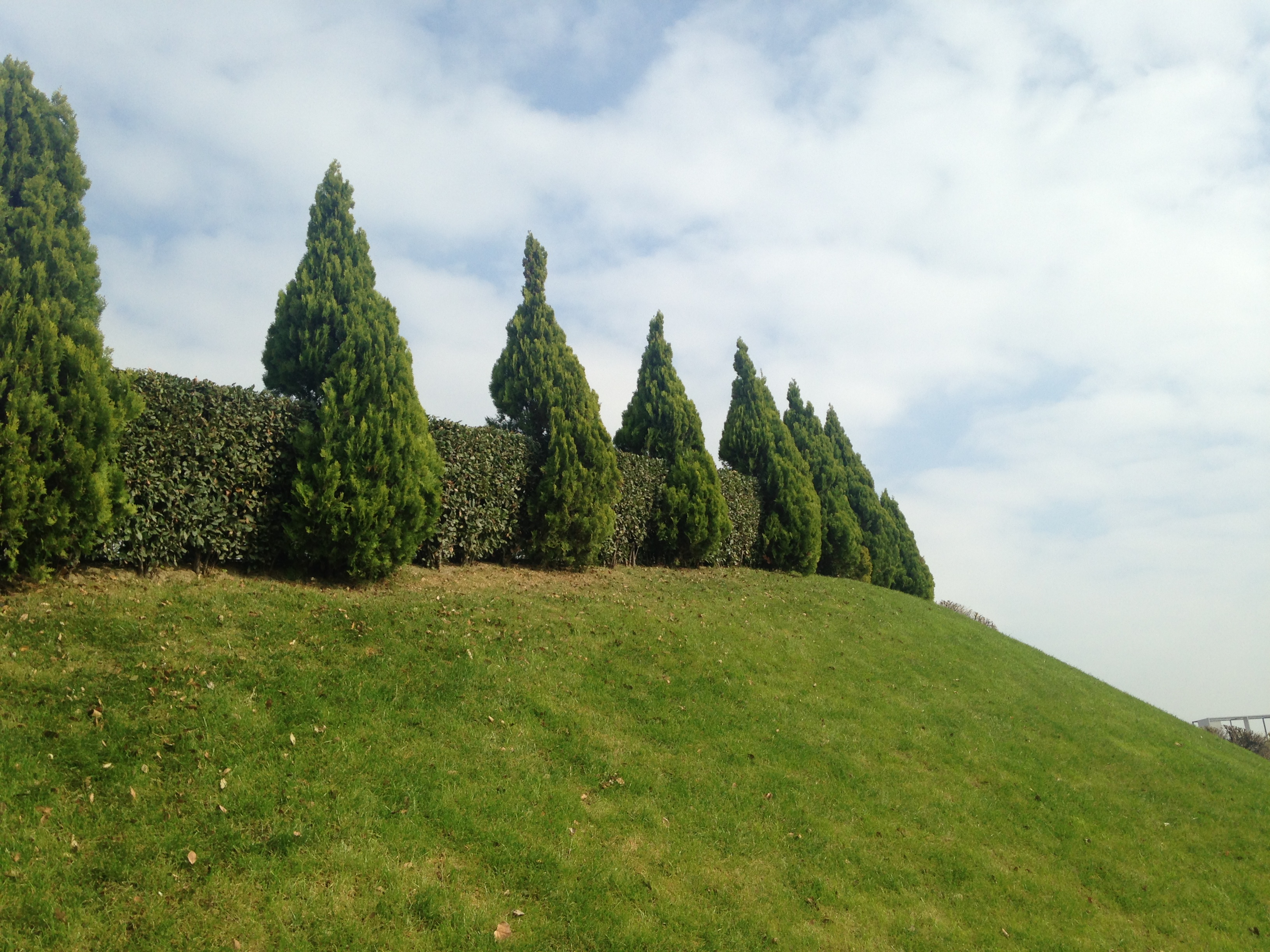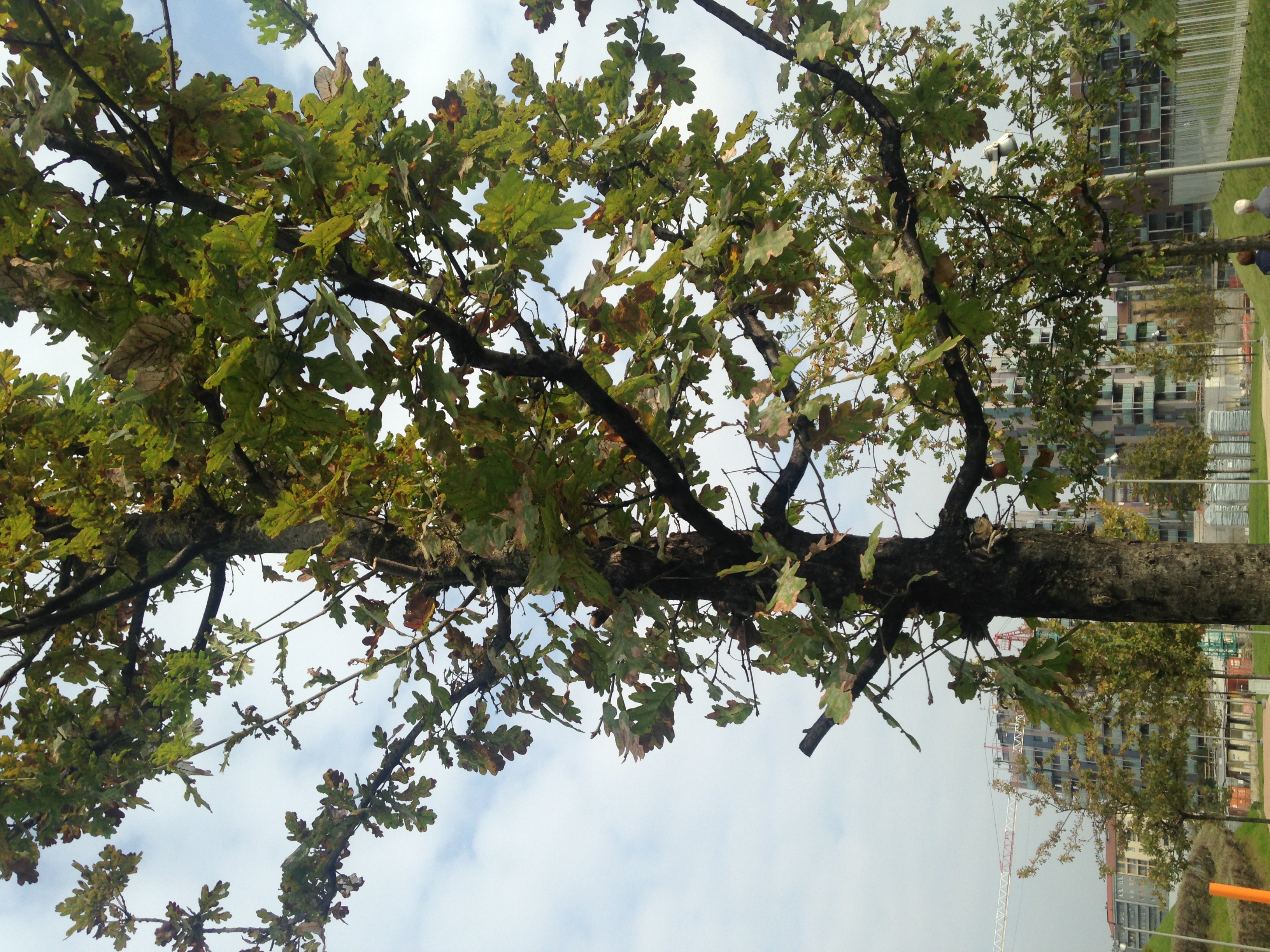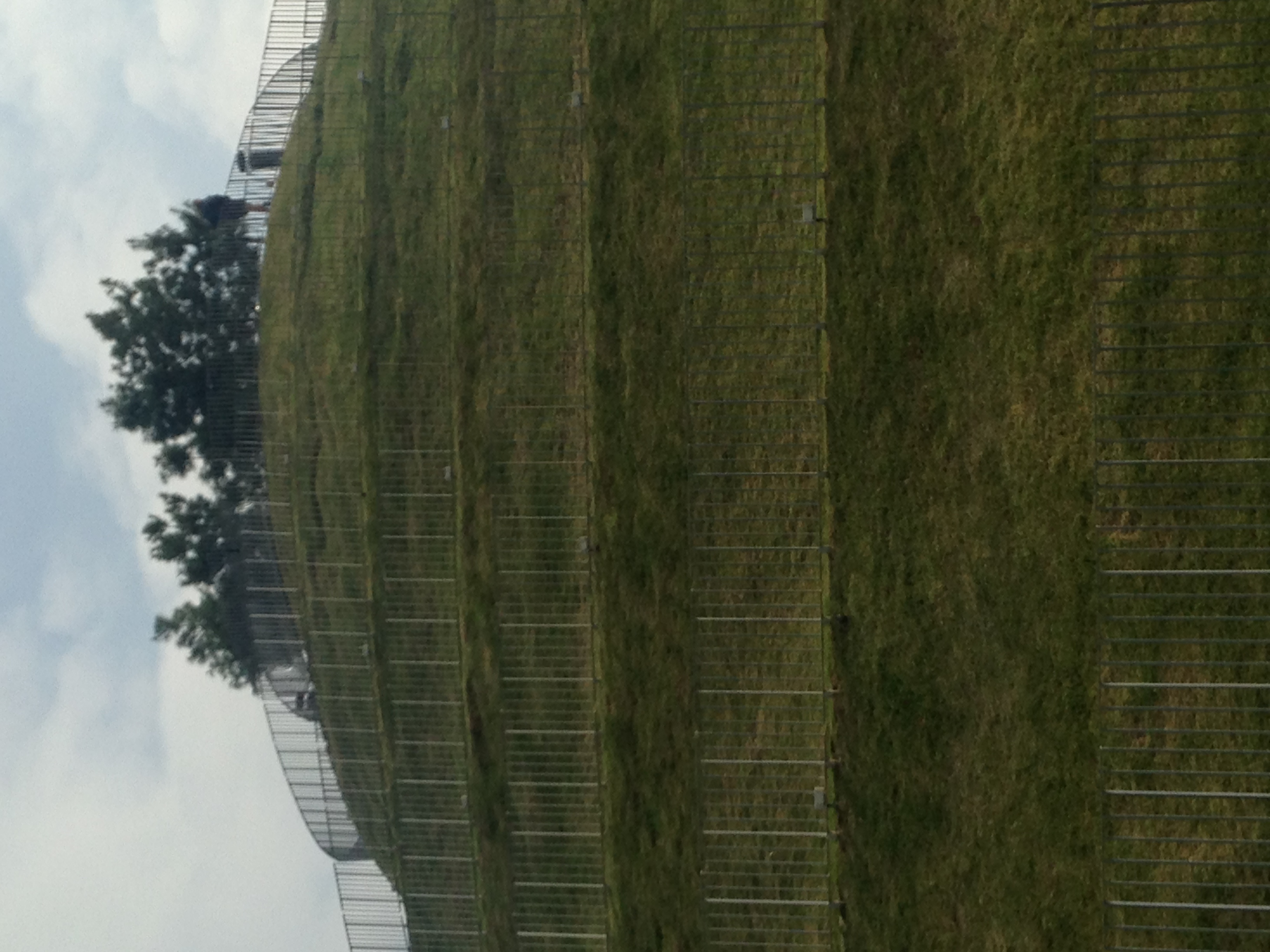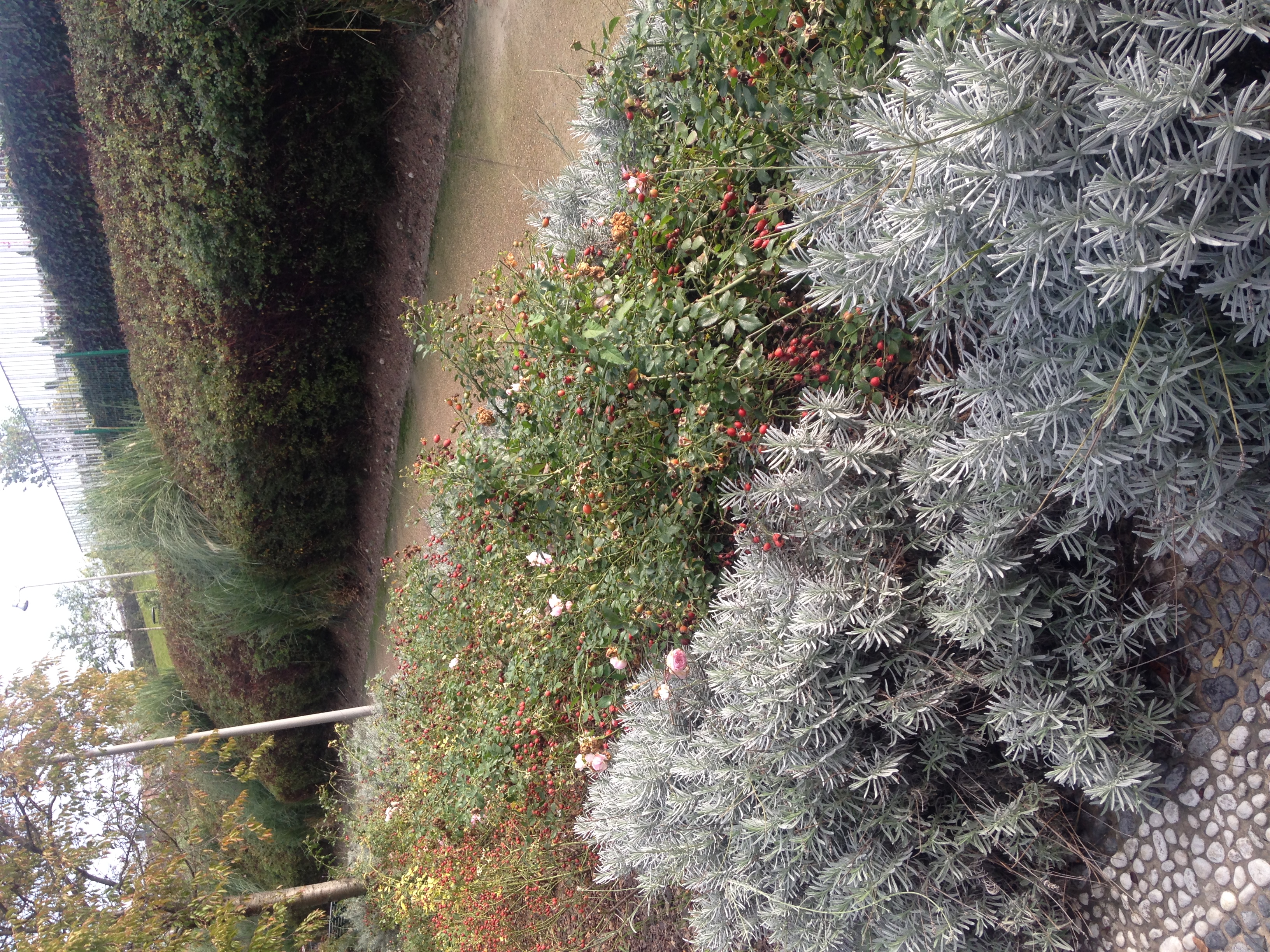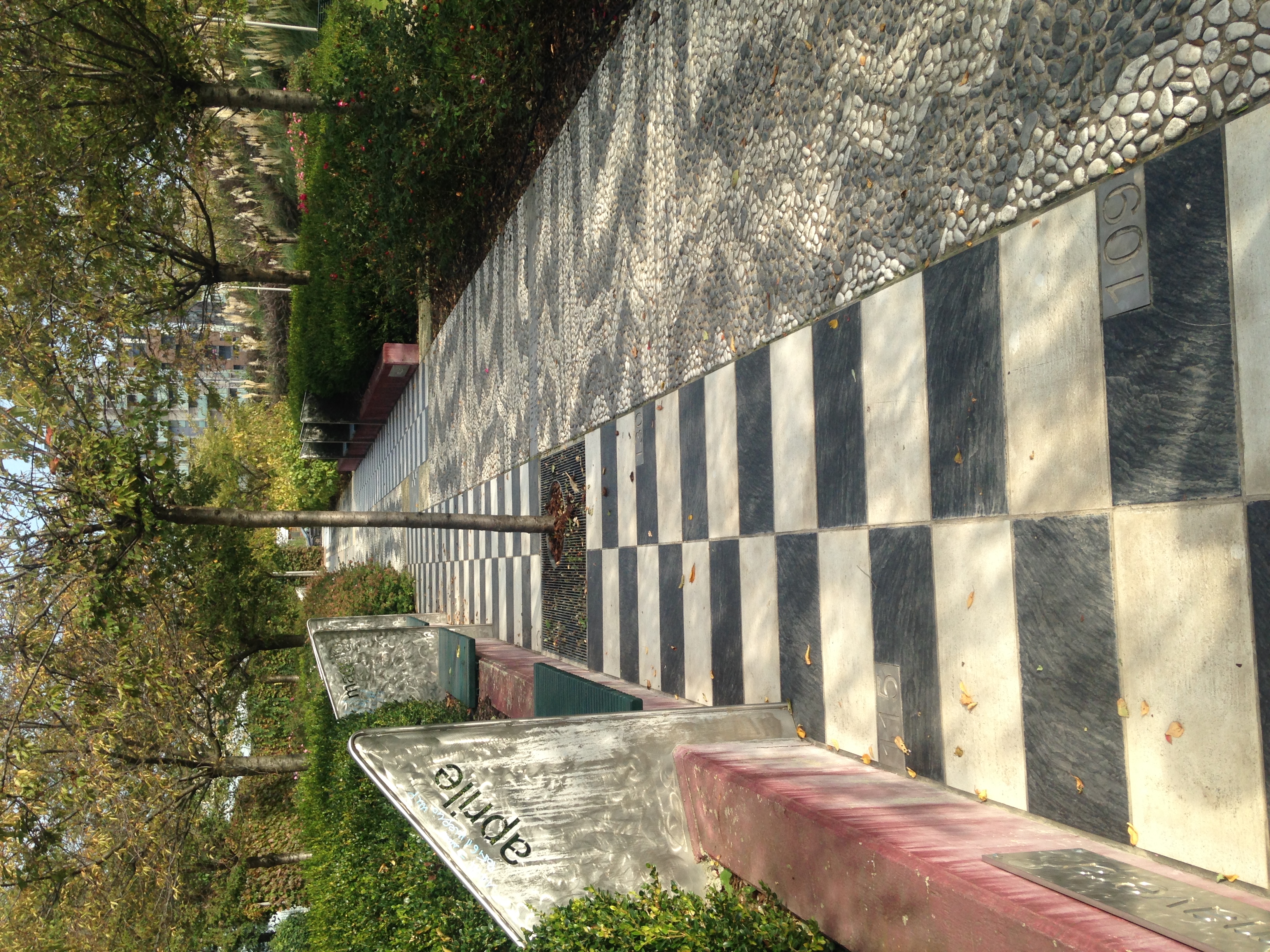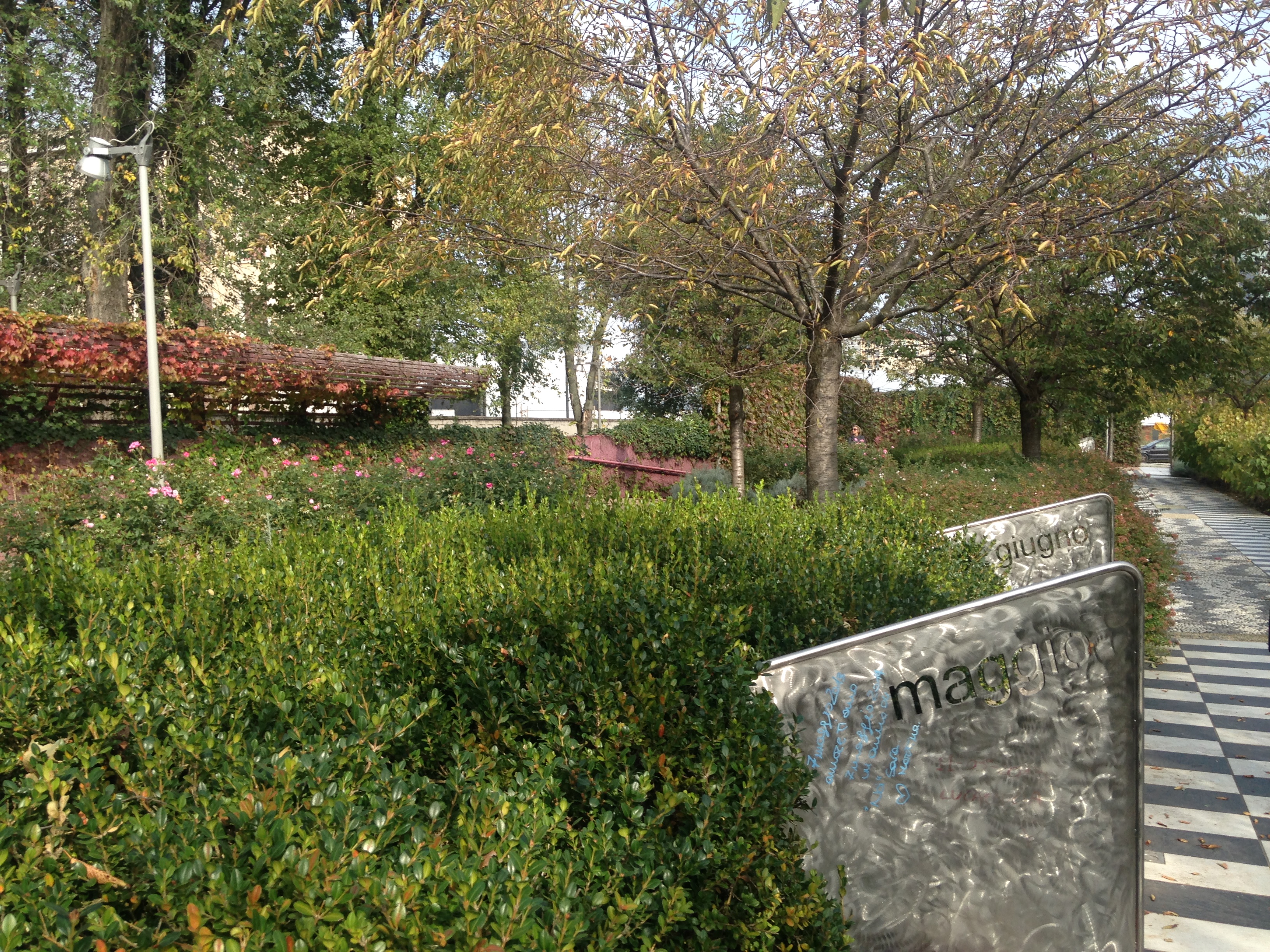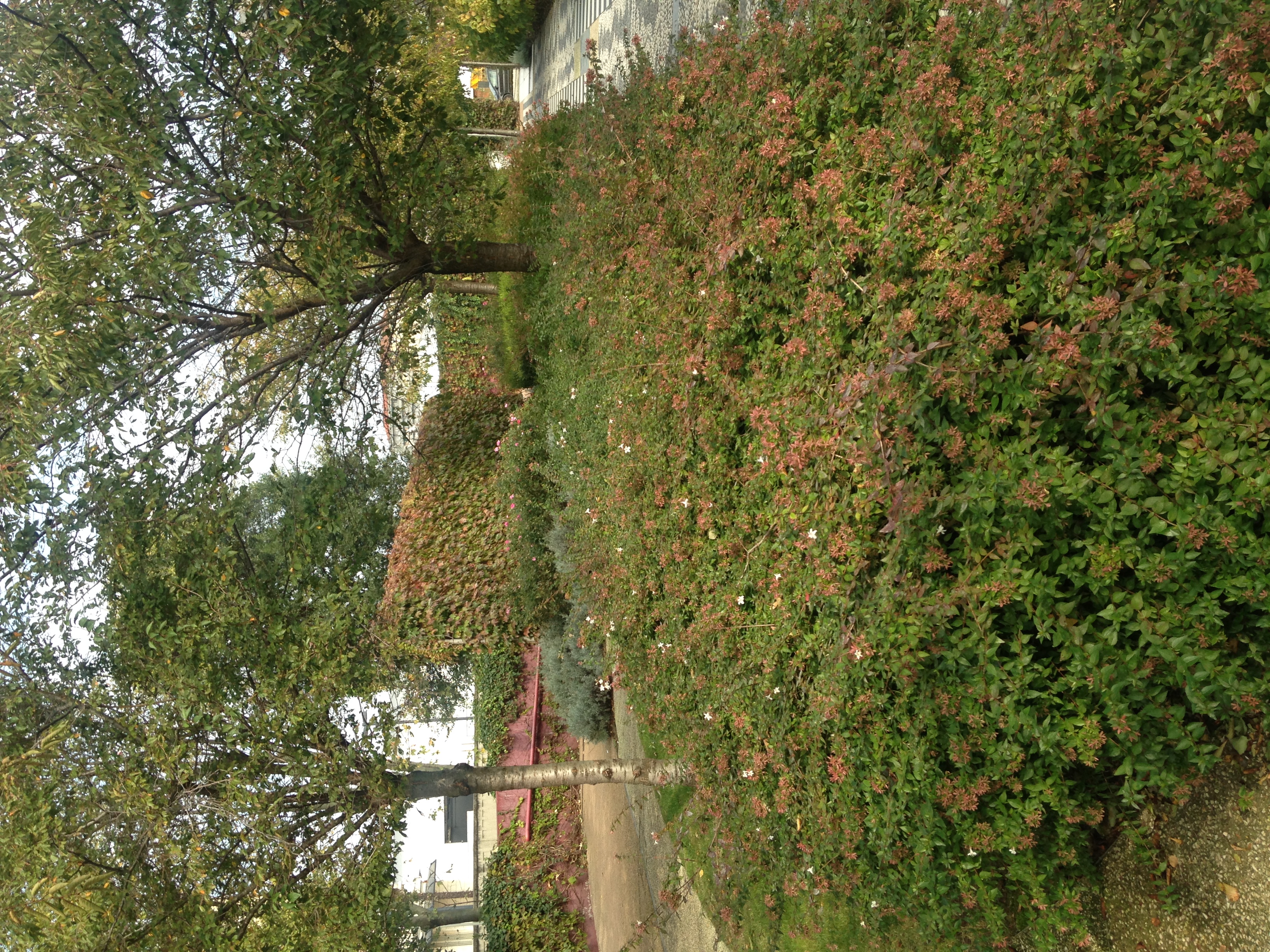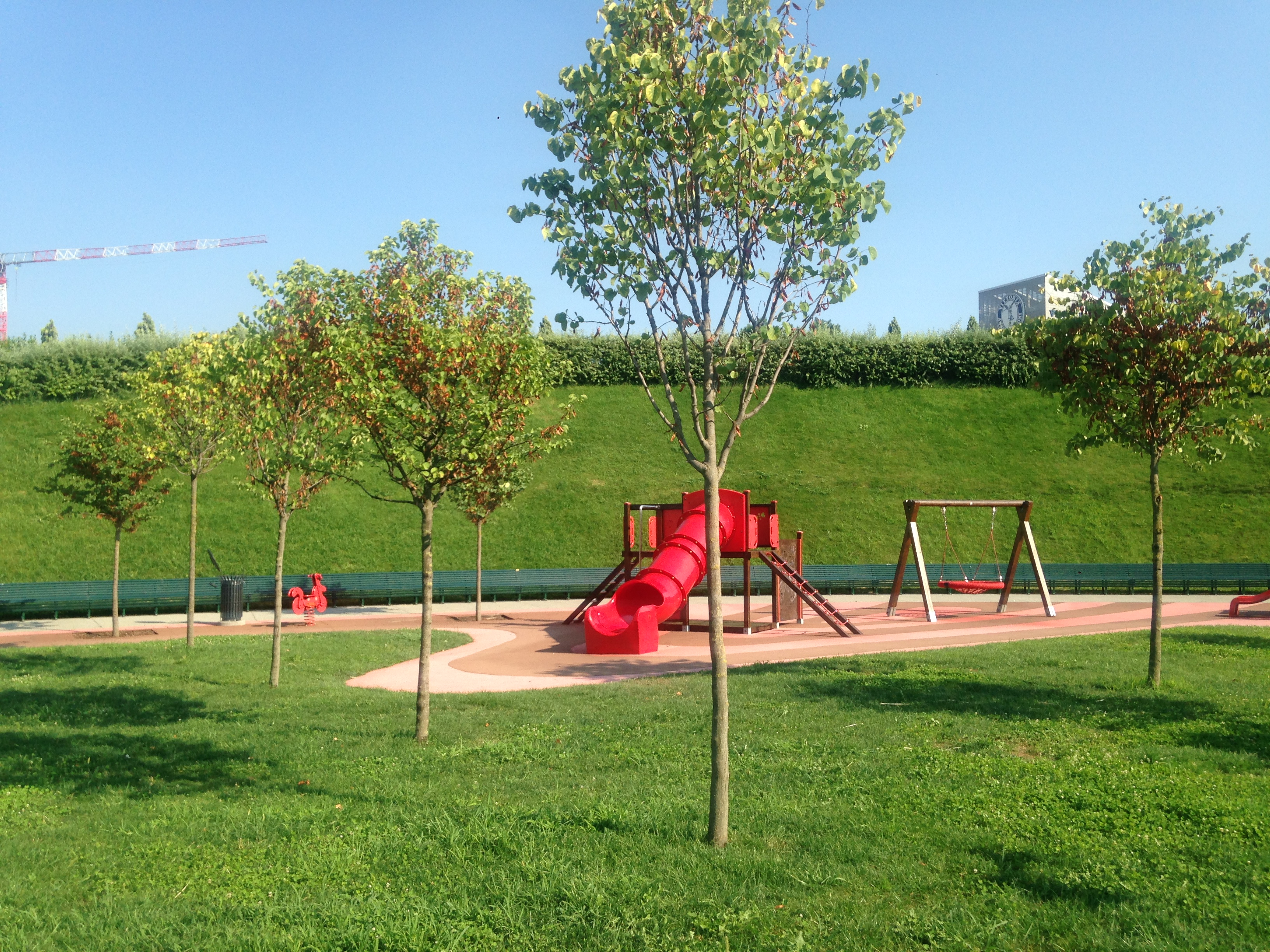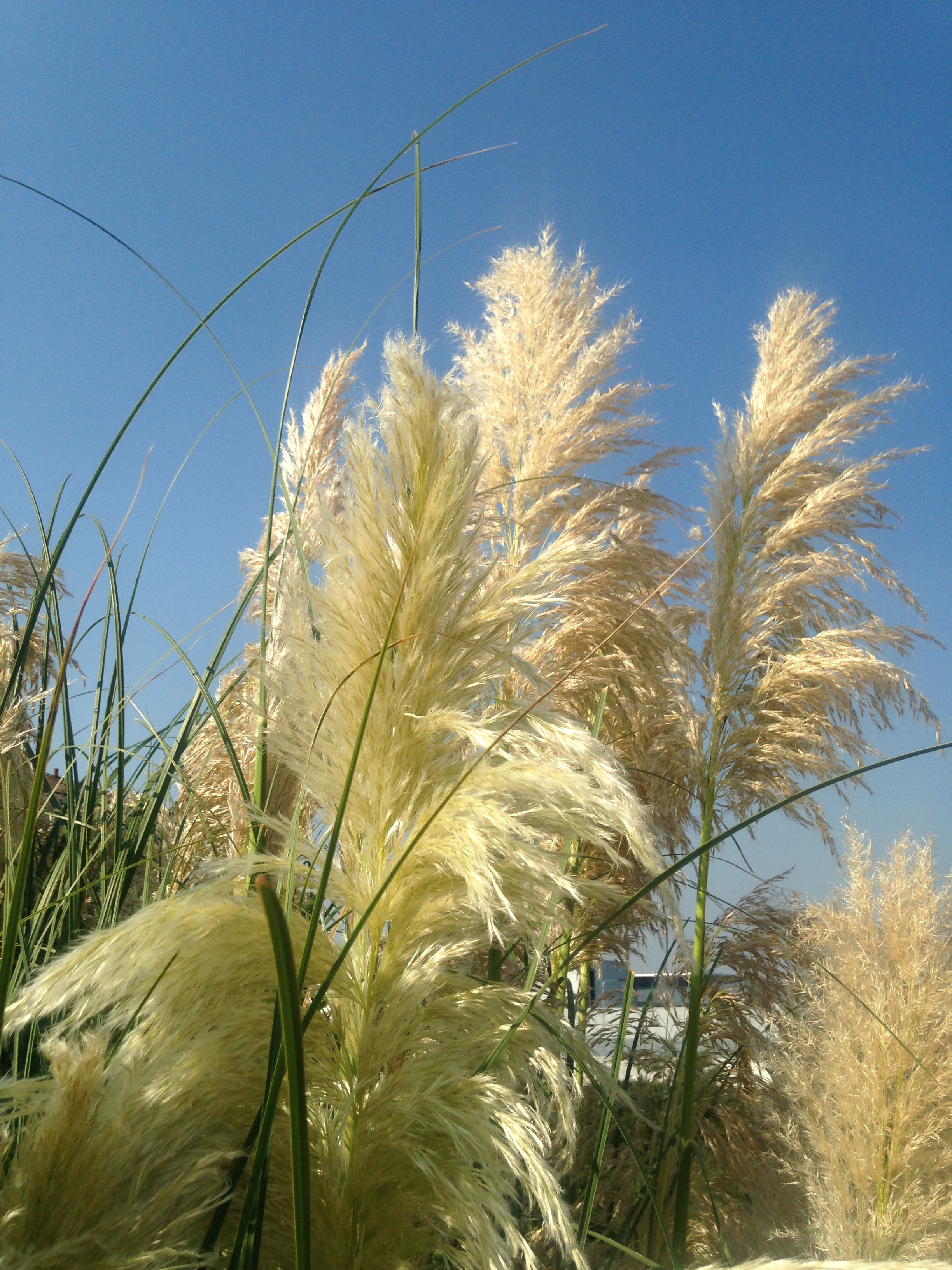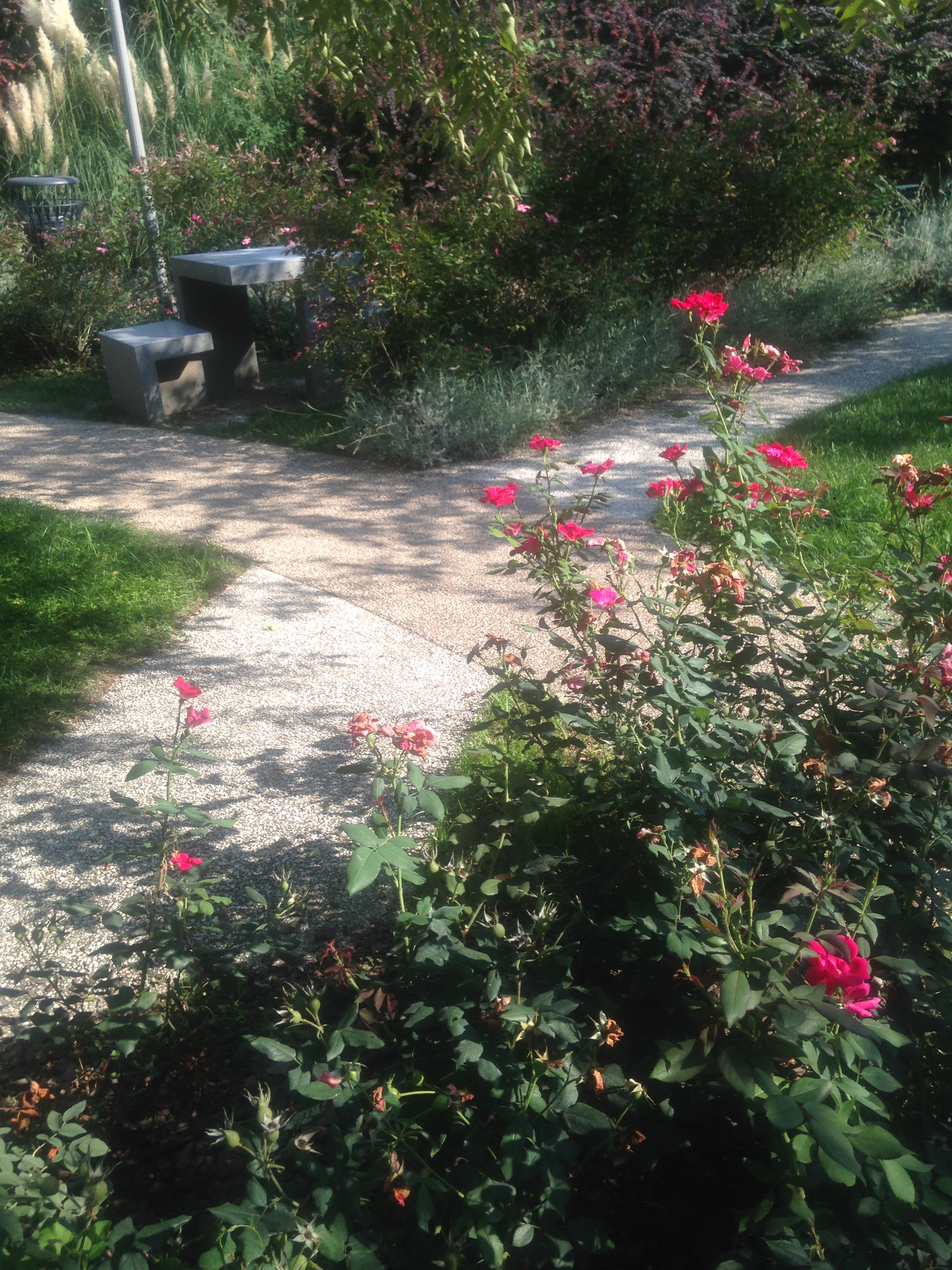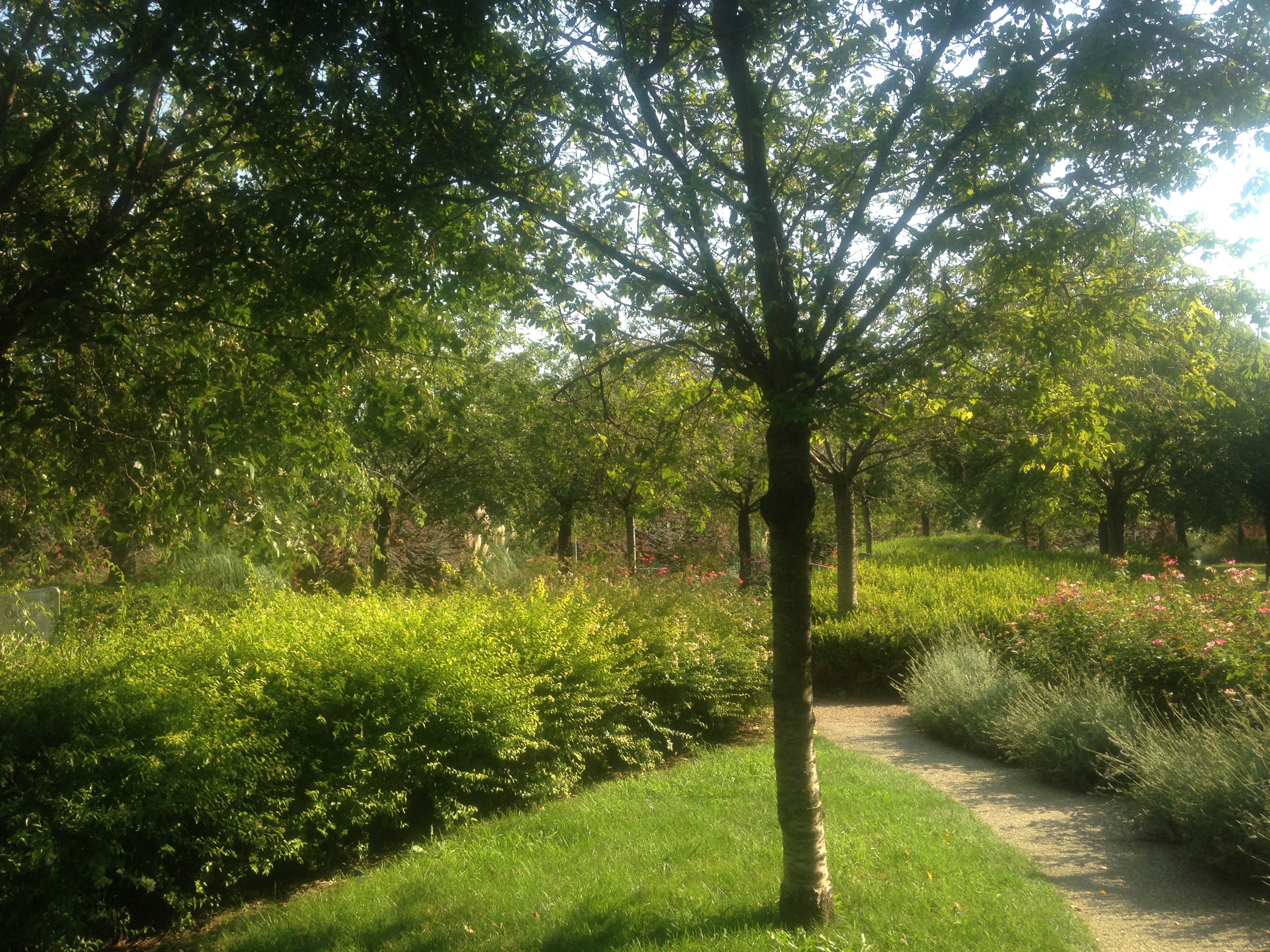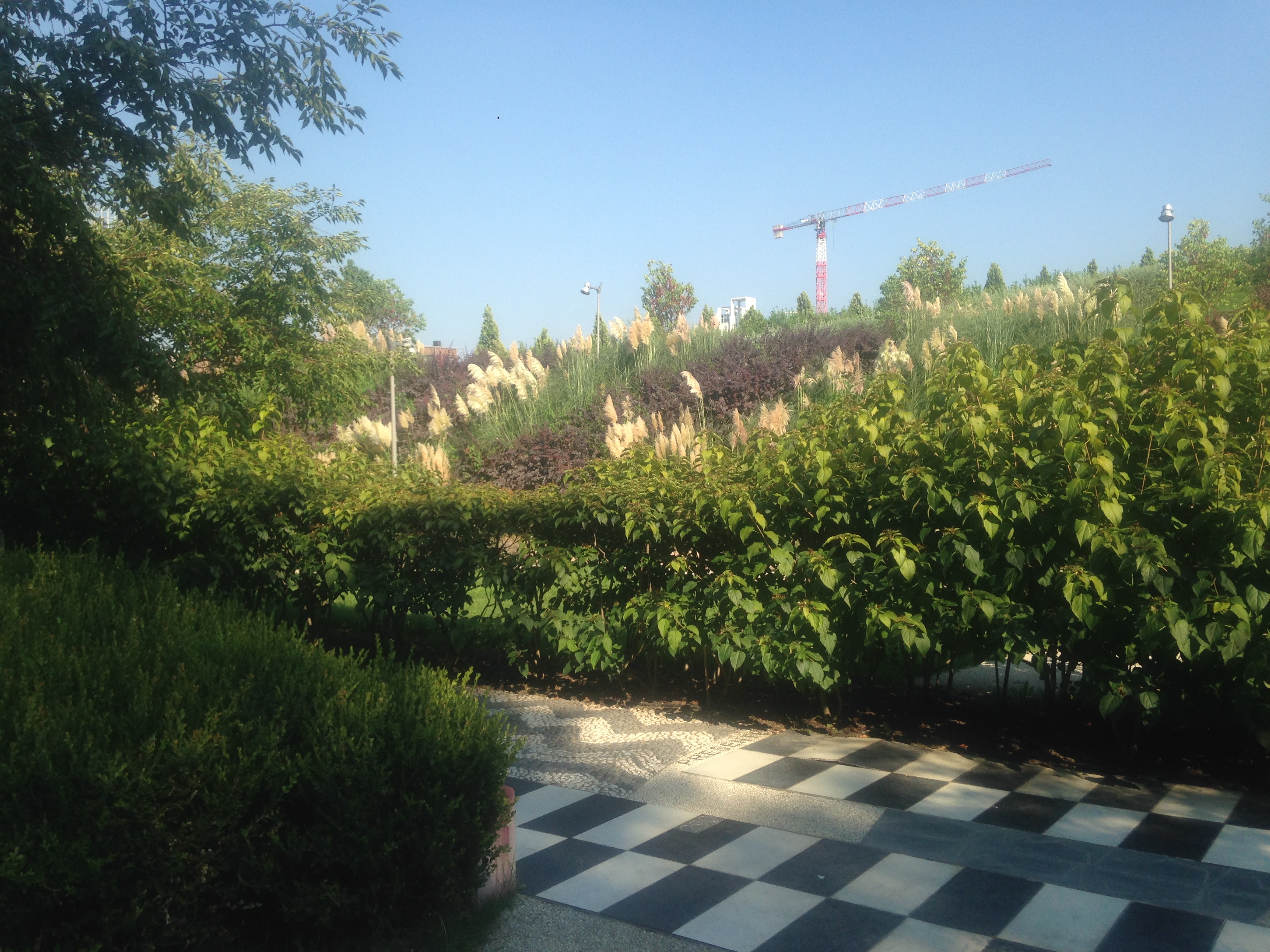
Portello Park or Alf Romeo Industry Park
This post is also available in:
 Italiano (Italian)
Italiano (Italian)
Opened in 2013, this park is in Milan, in the Portello area, among viale de Gasperi, viale Don Luigi Palazzolo, and viale Serra. It’s an important “breathing” facility for a neighborhood already suffocated by busy roads and pollution. The park also serves as a link between the old Fairgrounds and the QT8 district, thanks to its two pedestrian and cycle paths.
Built as a part of a larger redevelopment project of the neighborhood, the park now stretches over a previously abandoned area, covering 15.5 acres and soon to reach 20.
Designed by the American landscape architect Charles Jencks (of Scottish origin), it was blessed by the vision of one of the main interpreters of Post-modernism and decorated by the landscape architect Andrea Kipar (from Milan) and his Land Studio. It’s basically more than a mere park, as it can be interpreted from several points of views, in an outstanding blend of public green areas, culture, leisure, works of art, music, and science.
The bending shapes of the park are designed to remind us of the dynamism and vitality that once thrived in this very place when used by the Alfa Romeo plants – true automotive excellence in the whole Country.
THE PROJECT
The themes of dynamism and the passage of time are symbolically rendered by the three hills that stretch in sequence towards Montagnetta di San Siro; like the latter, they were built with rubble and excavated earth. At the same time, they soar in the sky, offering new, elevated points of view of the surrounding area, while protecting the park from external noise.
They also represent the very path of time with recurring spirals (particularly favored by Jencks), which define their outlines and borders.
The slopes, paths, lights, artifacts, plants, and colors interact with each other all over the park, creating a constant rhythmic flow.
These three elevations, featuring different slopes and heights (33, 46, and 72 ft), are called “the Hill of Prehistory”, “the Hill of History” and “the Hill of the Present”.
The first one represents the structure of the universe with spirals and stone elements similar to ancient menhirs.
The second hill reminds us of the industrial past with references to Alfa Romeo factories.
The third hill is the highest, cone-shaped and crossed by a double spiral path, one going up and the other going down – they meet on the top, where there is a terrace with a fountain and a DNA helix sculpture.
At the foot of the three hills, there is a round lake, to be used as a winter skating rink in the future.
Then, there’s the Garden of Time, a place protected by a red wall and the richest with symbols; it features blooming cherry trees and shrubs. Everything here speaks about the passage of time: the alternation of black and white plates, representing days and nights, metal inserts engraved with the names of the 12 months, several drawings, words, and small puzzles, as well as the mosaic of black and white pebbles, indicating the 28 days of the lunar cycle, the 365 days of the year, and the waves of the human heartbeat.
Upon its completion, the park will also include a grove and an area dedicated to sports activities, connecting this green facility to the neighboring residential buildings.
THE NUMBERS
The park is 15.5 acre-wide; 6.77 acres are currently used for the lawn; there are 444 trees, 2.082 shrubs, and 1.488 vines.
PLANTS
Among the most interesting plant species there are maples (Acer platanoides and Acer pseudoplatanus), beeches (Fagus sylvatica), Lebanon cedars (Cedrus libani), lindens, oaks Quercus robur, Liriodendron tulipifera and, (at the foot of the Hill of History, and in the Garden of Time) flowering cherry trees (Prunus x subhirtella “Autumnalis”) blooming from November to March.
The hills are covered with laurel hedges (Laurus nobilis), golden thuja, red tip photinia (Photinia x fraseri “Red Robin” and Berberis thunbergii atropurpurea. The red foliage is a tribute to the color of Alfa Romeo.
Some bad news: unfortunately the park maintenance is quite poor; almost all the artifacts have been damaged by vandals or even stolen, while cherry trees in very bad conditions have been partially replaced with Cercis siliquastrum; the gravel on the sloping paths has almost completely disappeared, while the hedges are badly pruned and invaded by weeds; the pond water is constantly flooded with algae.
This post is also available in:
 Italiano (Italian)
Italiano (Italian)
Contatti
Viale Serra, viale de Gasperi e via don Palazzolo - Milano(MI)
http://www.landsrl.com/project/32/
Altre info
Gratuito
